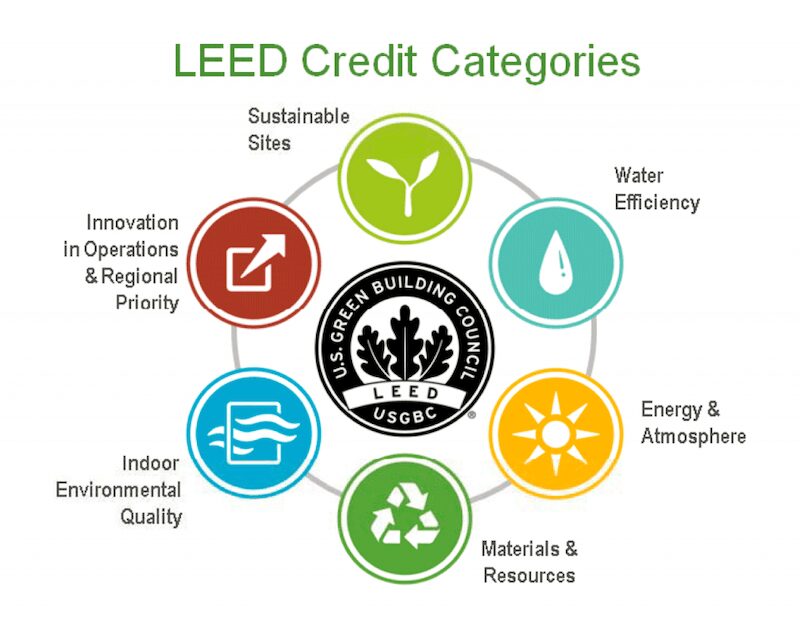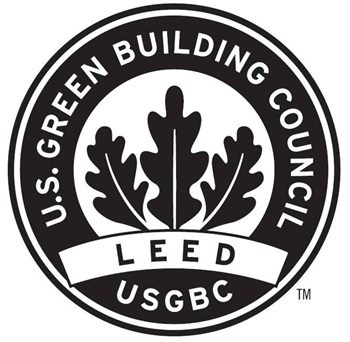According to a 2016 government survey, the leading cause of greenhouse gas emissions in NYC came from the city’s buildings. Other emission factors, like cars and public transport, didn’t even come close. However, the city knows that this is a problem, and has taken steps to address its impact on the climate, pledging to be largely carbon-neutral by 2050. Several measures have been taken here from the implantation of Local Law 86 and Local Law 95 which have helped the city track energy efficiency and grant the authority to make changes to existing buildings and new projects. In 2016, Local Law 86 expanded and gave the city a new goal, to have buildings old and new become LEED certified.
What is LEED and Its Rating System?
LEED or the Leadership in Energy and Environmental Design is a rating system that’s meant to signal the sustainability and efficiency of a building. Several factors are used to score buildings like energy consumption, waste management, water management, environmental quality, and more. Buildings are rated on a scale between 1-100. A building is certified when a building scores between a 40 and a 49, however Silver, Gold, and Platinum certifications can be given to buildings that score higher. The higher the score, the greener the building.

How Are NYC’s LEED Ratings?
So how is NYC doing in terms of LEED ratings? It’s actually looking pretty good so far! As of 2020, New York State ranked 5th in the nation for buildings with LEED certifications and NYC specifically is a big part of that. Over 40% of commercial buildings in the city have some sort of LEED certification, and over 2,000 residential buildings can say the same. Some of these buildings include The Greenwich Lane and 10 Hudson Yards. Manhattan, especially, is becoming more energy-efficient, especially with the expansion of Local Law 86 in 2016, which requires new buildings and renovations to receive city funding to meet certain design and energy use standards, specifically LEED.
These design and energy standards from the NYC government involve HVAC, boiler, lighting, and plumbing installations and replacements meeting guidelines that reduce energy usage and water waste. This is pretty easy when constructing a new building. After all, starting from scratch is much easier than replacing older equipment in prewar buildings. That said, there are still ways to make pre-war buildings energy efficient too. The US Green Building Council even has a special process for existing buildings seeking to get certified. Sometimes it’s as easy as getting a new boiler. However, not all buildings are as quick to comply.
Till now, we’ve mostly been talking about buildings that receive government money. Those are the ones that Local Law 86, and its revisions, apply. However, New York City also has many privately owned buildings, especially ones that are residential. So far, the LEED requirements are unenforceable unless the building owners take government money. NYC is trying to combat this with Local Law 95, which ranks the energy efficiency of a building, gives said building a letter grade, and forces the building to post the letter grade on all entrances. This applies to all buildings over 25,000 square feet regardless of who owns/funds them.
NYC Buildings Are Getting Ds from LEED
These rankings have revealed that nearly half of the buildings that submitted data have a D rank or lower, which is the lowest rank a building can get (unless a building doesn’t submit data. Then they get an F). Granted, this is an Energy Star rating, but you do see correlation when it comes to scoring. The Empire State Building, for example, has a B as an Energy Star rating and is LEED Gold Certified. This is, essentially, the city’s way to try and shame privately owned buildings into aiming for LEED certification. Buildings don’t currently face a fine if they have a low energy star ranking, but that changes in 2024 when building fines will correlate with how much emissions they produce.
Despite that, private buildings are struggling to become energy efficient. There has been an increase in LEED buildings, but there has also been an increase in privately owned buildings not submitting energy efficiency data, which is not a good sign. However, there will always be stubborn landowners in NYC and everywhere else in the world. All in all, NYC, privately owned buildings included, are making moves to become LEED certified. It’s not happening as fast as the city would like. We probably are a tad behind in that carbon neutral by 2050 goal. But things are happening.

How Can You Improve LEED Scores?
So how can things happen a little faster? How can you help the process? First and foremost, contact your local leaders and ask them to be more vocal and transparent about NYC’s climate change goals. Local Laws 86 and 95 have made a lot of progress, but more clearly needs to be done if the city’s climate goals are going to be met. Push for more legislation that makes sustainable buildings receive benefits of some sort.
If you own your home, switch to energy-efficient light bulbs and windows. Those go a long way. Overall it’s still your management team’s decision to make changes to plumbing and heating, but make your voice heard if you’re on a co-op board. Additionally, make the benefits of living in a green building known. Though it might be expensive to replace some equipment, they are overall cheaper and easier to maintain than traditional buildings.
Overall, the gloom and doom that you see in many stories of New York are not found in this situation. Are things going as smoothly as they could be? No, but there are always a few bumps in the road. Overall, the future looks bright when it comes to LEED buildings in NYC, and the rest of the country. Many states are actively competing to have the most energy-efficient buildings, and it’s making a lot of positive change happen. That change will, hopefully, also be seen in private buildings, and things are still looking up there. Everyone needs to come together to prevent further damage from climate change. Thanks to LEED certifications, it seems like the city has a way to make that change possible.
Russell is a writer and comic based in New York City. His plays have been featured at Penn State’s Cultural Conversation’s Festival, The NYC Thespis Festival, and Imaginarium’s Inaugural Theater Festival. Follow him on TikTok and Instagram @pooleparty528



